Executive Producer
Usually the person who spends money to invest in the movie. This title is the title of 'buying and selling', having money is having this title!
Producer
The producer is the person who facilitates the film to be made. The producer is responsible for initiating, coordinating, monitoring and controlling issues such as monetization of films, hiring key people in the film crew, and organizing film distribution. Producers work directly throughout the filmmaking process, from concept development to finalization and release.
Line Producer
As the person in charge of all internal affairs within the crew, who oversees the actual production issues, not the creative side, including staffing, shooting equipment, techniques, budget, filming schedule…
Production Manager (PM)
The Production Manager assists the line producer with the actual production issues, not the creative aspects, including personnel organization, shooting equipment, techniques, budget, shooting schedule, etc., responsible for the production of the crew. Films must be filmed on schedule and within budget limits. PM also manages day-to-day expenses such as managing expenses, salaries, production costs, daily equipment rental costs, making Call Sheets, etc. PM works under the supervision of a Line Producer and directly supervises Monitor the Production Coordinator.
Production Coordinator
As the person in charge of organizing logistics from hiring film crews, renting equipment, hiring actors...
In small film crews, the Producer will also do the work of the Production Manager and Production Coordinator.
Director
The director is responsible for the overall creative side of the film, including controlling the film's content, pacing, directing actors' performances, organizing and selecting the film's setting, managing the film's elements Technical issues such as camera placement, lighting usage, timing and content of the film's sound and music. The director is the one who makes the final creative decisions of the film.
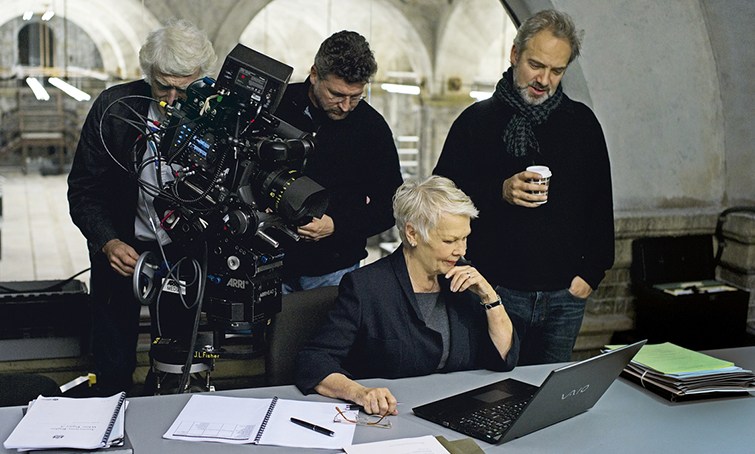
Although directors have a lot of power, they often end up being dependent on the film's producers. Many directors, especially well-known directors, often take on the role of producer, and the distinction between these two roles can sometimes be vague.
First Assistant Director – 1st AD
The first assistant director is the assistant to the Production Manager and the director. The ultimate goal of 1st AD is to ensure that the film is shot on schedule as well as to ensure that the working environment of the crew, from the director, actors, and other supporting actors, can focus on their job. 1st AD is the person who runs the work on the set, informing the team leaders what their work is, what is the work to be done, what scenes are being filmed or about to be filmed, what actors are going to do. set or give them a break while the crew is putting the lights on… Generally, this person is responsible for managing the entire crew and cast's daily schedule, equipment, scripts, and sets. 1st AD is also sometimes responsible for directing a back-up cast in large scenes or an entire small scene, when requested and authorized by the director. 1st AD and Production Manager are the two highest positions of the below-the-line group, which is the technical team (different from the above-the-line group, which is the creative team).
1st AD's power on the scene is in some respects superior to the director. Since it is the responsibility of the 1st AD to run the crew so that everything goes on schedule, 1st AD must always keep the director informed of where progress is going (slower or faster than planned) and Sometimes, it has the right to require the director to decide to cut some planned scenes to ensure progress, and to stop shooting when the crew has exceeded the allowed filming time. In the United States, the majority of film crew members are unionists, and unions have regulations on occupational safety as well as the number of hours worked per day (such as actors not working more than 12 hours per day). /day, do not work continuously for more than 6 hours and the middle of the day must be at least 30 minutes, and must have at least 12 hours of rest after a working day, if you work more than you have to pay more and the actor also has the right to refuse. other positions such as cameraman, gaffer, PA.... working no more than 14g/day and at least 10 hours of rest). 1st AD is responsible for not violating these rules and requires the director to stop work when it is time to take a break.
Second Assistant Director – 2nd AD
The second assistant director is the chief assistant of 1st AD and helps 1st AD with some tasks. In addition to helping 1st AD schedule filming, make reservations, call cast and crew arrivals, roll attendance, etc. 2nd AD can also participate in directing public actors. 2nd AD is also responsible for making a Call Sheet (i.e. a work assignment sheet and daily shooting schedule announcement) to let the crew know the filming schedule and important information for the shooting date.
Production Assistant
Production assistants assist 1st AD in running the set – for example, calling actors back to the set, telling each crew member what they have to do, shouting out loud to everyone. give orders (such as shouting 'shoot, cut' after the director has shouted to let everyone near and far know), check the scene to make sure nothing is obstructing the middle of each scene, bring documents to for each person in the crew… PAs are the first to arrive at the scene and the last to leave. The PA also takes care of the office work with general paperwork, making phone calls to places, photocopying scripts, picking up lunch, assisting the Production Coordinator and Production Manager. PA doesn't usually require someone to have a film major or go to film school, but at the same time many people become directors starting out as PAs, especially as a PA for TV series.
Script Supervisor
The studio secretary keeps track of which parts of the script were filmed and notes differences between what was filmed and what was written. This person must also write notes for each shot and follow the movement of the actors, props and all other details to ensure continuity from shot to shot, scene to scene. other scenes. The studio secretary works closely with the director. The studio secretary plays a very important role, especially for the editor, because this is the person who records the technical parameters, from the slate notes, to the lens specifications, focal length, and magnification. the length of each shot, whether the sound is good or not, which take is a good take by the director. In a nutshell, the studio secretary's notes to ensure that the scenes are re-edited can be edited together.
CAMERA TEAM
Director of photography
The DP is the head of the cinematography and lighting team of a film. The DP makes lighting and framing decisions for each scene in agreement with the director. Usually, the director will tell the DP what they want the shot to look like, and the DP will choose the filter, aperture, and lighting setting to achieve the desired effect most effectively. The relationship between the director and the cinematographer is very dependent on the working habits of each director: there are directors who let the DP decide, but there are directors who claim to have the final decision up to them. The conflict between the director and the cinematographer often leads to… the death of the cameraman, because it affects the entire crew and the film itself!
Usually, directors want to hire cameramen who understand them best and are easiest to work with. Many directors just enjoy working with some of their close DPs. For example, when people think of films by director Steven Spielberg, one immediately thinks of DP Janusz Kamiński, who has shot all of Spielberg's films from Schindler's List to Indiana Jones and the Kingdom of the Crystal Skull, Munich. , World War, Airport Terminal, Catch Me If You Can, Artificial Intelligence, Rescue Private Ryan, etc. Or talking about the success of director Wong Kar-wai, it is impossible not to mention the contribution of talented cinematographer Christopher Doyle, when they collaborated on a series of beautiful and dreamy movies from the main story A Phi, Chongqing Train, Poisonous East and West, to Happy Together, Mood for Love, 2046. Even in Vietnam, we have a pair of songs with the same director Le Hoang – cinematographer Pham Hoang Nam.
Just a simple comparison: You'd rather have an experienced director of photography shoot your movie on a DSLR, than have an inexperienced director shoot your movie on ALEXA. While the choice of camera is not important, choosing an experienced director is certainly important.
In the best case scenario, you've got both a high-end camcorder and a talented DP on the team. But if the budget allows only one of the two options, choose DP. The amazing lighting, composition, and camera movement that a seasoned DP brings will be better rendered on camera than just a high-end camcorder that doesn't know how to exploit them.
In a nutshell, the director of photography (DP or DoP) manages the camera department, lighting, electrical, and mechanical understanding. They are the head of the camera crew. The film director will tell the DP how they want the shot to be. They will then work with these departments to select cameras, lenses, filters, scene composition, lighting design and setup, and any necessary equipment.
Cinematographer often refers to DP, but many people in the Hollywood profession think that they only use this word to refer to DPs who also act as camera operators.
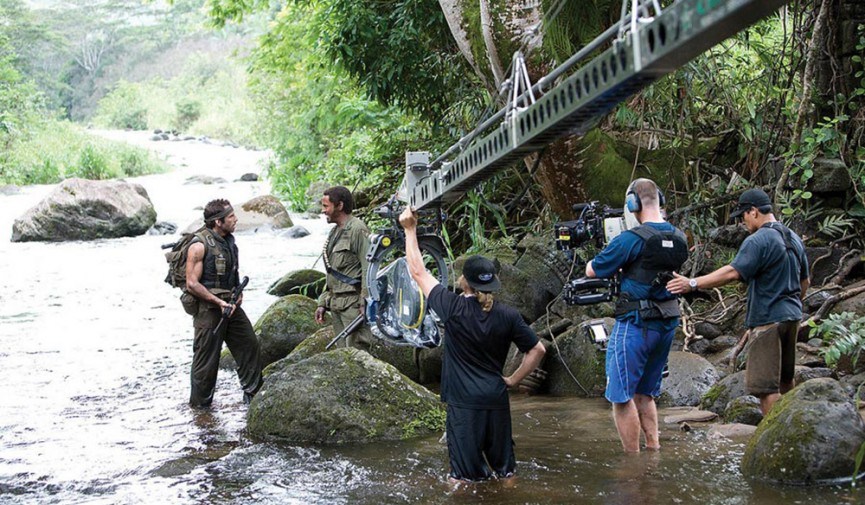
Camera Operator
A movie has only one DP but can have many different cinematography. Cinematographer is the person who directly controls the camera according to the instructions of the DP or director. Usually, in Hollywood, the DP doesn't directly control the camera. But in low-budget movies, they often combine both tasks for one person. Meanwhile, in some special cases, a film has not only more than one cameraman, but also a steadicam cameraman (i.e. someone who operates a specialized type of camcorder that requires special control skills). and technicians operate a camera control device (also called a camera robot, which allows the operator to repeat a machine movement hundreds of times as one). Supporting the cameraman is the First Assistant Camera (referred to as 1st AC - First Assistant Camera), also known as the focus adjuster, responsible for ensuring that every scene is sharp; The second shooting assistant (2nd AC), in charge of controlling the clap plate (on which there are full parameters of the film roll, footage, director, filming, shooting date, etc.)
so that the editor can know what the footage is all about) at the beginning of each shot, as well as assembling the film (for film and tape) or loading the film (for digital film) after each shot in the event that There is no specialist to do this work. 2nd AC is also responsible for recording film deliveries, overseeing camera equipment organization, and moving equipment from one setting to another.
The cameraman is the person who controls the camera. They are the ones behind the lens and controlling the camera. This location varies from set to set, and a director can assign this location to certain scenes for each scene.
Cinematographer and director of photography are used interchangeably. The director of photography in the credits is the chief cinematographer. Outstanding director of photography was invited to become a member of the American Association of Cinematographers (ASC).
If the director of photography assigns camera control to someone else, or if multiple cameras are being used at the same time, the other cameramen are simply referred to as the camera operator.
1st AC, Focus Puller, Assistant Cameraman, B Camera
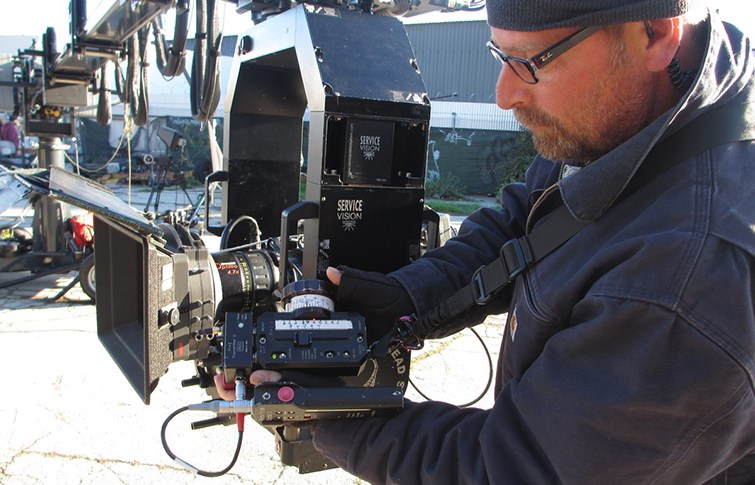
Assistant cameraman 1 is in charge of the camera department. In one scene, Sub-cam 1 is responsible for focusing the camera. This has led to another way of calling this member the focus puller. They are responsible for the maintenance and care of all cameras. During pre-production, Sub-Camera 1 will travel to tenants to check equipment and make sure everything is ready according to schedule.
On set, sub-shot 1 will set up the camera, swap lenses, and move it through the scenes. They are also responsible for updating the dope sheet. A Dope sheet is a recording report that lists the scenes that have been filmed. If shot on film, the list will also contain the contents of each exposed roll.
Most notably, sub-rotator 1 should not be seen through the lens. They must be able to keep focus by paying attention to the distance between a subject and the camera.
2nd AC, Camera Loader, Clapper Loader
Sub-slot 2 works directly with Sub-slot 1. Sub-slot 2 controls the clapperboard at the top of each scene. They also install film on the camera if there is no one on set to mount the film. They note when the film is received, used, and sent for finishing. Sub-cam 2 also oversees the transport of the camera equipment to different locations.
Extra shoot 2 will also mark the recordings, the points that the actors will perform. They update the capture report along with the camera settings, like aperture and focal length. This is recorded for any future replays or replays.
Steadicam operator
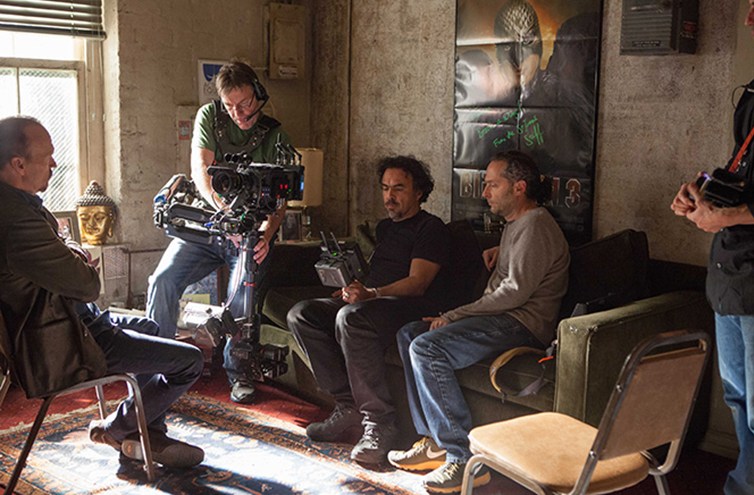
A Steadicam operator is a specific camera operator using a Steadicam device. Steadicam is a brand of camera stabilizers; this term should not be used to describe other types of stabilizers such as MoVI and Ronin.
Digital imaging technician
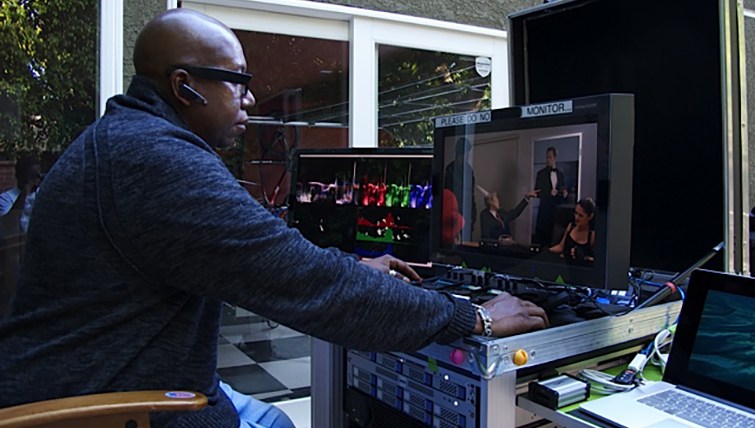
Digital imaging technicians are responsible for image quality control, on-set color correction, and production management. The DIT manages all data and file distribution. They took the machine's memory card and immediately rendered and backed up the footage. They then send the uncompressed files to the editors and create compressed positive movie files (proxy files) for the director. DITs have deep expertise in all things digital like cameras, codecs, laptops, monitors, and more.
Recording Department Assistant (Camera PA, Camera Intern, Camera Trainee)
The camera assistant assists the filming crew with any necessary tasks. They are on the set to learn by supporting each of the positions listed above.
Grip's Nest
Heading the Grip team is Key Grip, who works together with the DP in setting up the set to achieve the highest efficiency in arranging lights and lighting equipment. For many DPs, the key grip is their left hand – with a good key grip, the DP hardly has to worry about their job. Helping Key Grip is the best boy, who is also responsible for organizing the truck carrying rotating equipment. The main task of the grip team is to work together with the electric team to place the lights in the most efficient and safest way for each scene. They will be in charge of all the work of moving equipment on set, from moving and setting the scene to get the camera in place to dolly assembling (including putting the dolly in place, balance, move the dolly bars, and even push the dolly).
Power structure
At the top is the gaffer, who is responsible for the design and implementation of the planned lighting scheme. If the key grip is the left arm, the gaffer is the DP's right arm. An experienced gaffer can coordinate all the lighting, lighting, know what kind of lights to use, how much intensity, what color gels to use, etc. to be able to achieve the required lighting that the director wants. and the desired DP to achieve. The main assistant to the gaffer is also called the best boy. The Power Team also has lighting technicians who are responsible for placing and controlling lighting equipment.
Field sound team
The field sound team takes care of synchronous recording right at the filming site. Usually in small crews there will be two people in this crew, including the production sound mixer and the boom operator. The Field Mixer is the head of the on-site sound team, responsible for recording all sounds during filming. This includes the selection and use of microphones, recording equipment, and on-site mixing to ensure the resulting sound can be used in post-production. Meanwhile, the boom operator is responsible for setting the microphone movement during filming – including placing radio microphones in key positions, attaching and hiding recording devices on actors, controlling Control the boom lever to capture the actor's voice but do not let the microphone enter the frame. In addition, the field sound team may also have a support technician with a fairly flexible role, usually helping to wrap the cable for the boomer during filming. Depending on the complexity of the scene, the producer will decide whether to hire an additional person to support the sound team on the scene.
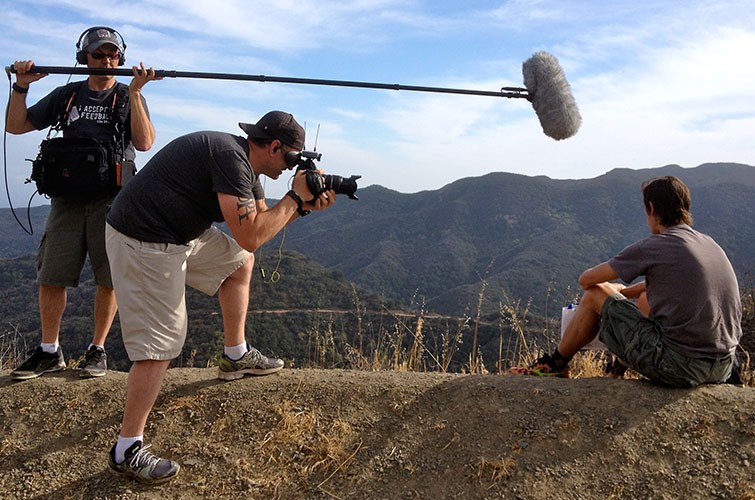
We've all heard it a thousand times – sound makes up 50% of the finished film, but a lot of us are still stingy in this department.
Never underestimate the complexity of field recording, as bad sound is something your audience (and potential distributors) will never let go of or forgive. Either way, work on a budget to hire the best pre-recorder possible. That way, through production, you'll be comfortable knowing you've got everything you need.
ART TEAM
The Fine Arts team in big feature films often has hundreds of people. Usually, the Fine Arts team consists of many small groups: the art design team works under the art director, the set designers and the sketch artists; the setting decoration team works under the direction of the set decoration artist; props working under propmaster; The construction team works under the control of the construction commander, in addition to the scenic team (landscape team) and special effects. It is they who are responsible for 'switching' the house on the North Shore of Boston into a beautiful home in remote Alaska in The Proposal, the streets of Hoi An in 2000. Saigon in the 1950s in The Quiet American, or a town in the US state of Arizona became the scene of Saudi Arabia in The Kingdom!
Production Designer
In the US, there are almost no specialized schools that teach film scene design, production designers are people who work in other professions, such as architects, interior designers, painters, stage designers. , switched to doing the background design for the movie. The production designer is the person responsible for creating the entire visual element of the film, from the setting, the costumes, the scenery to the makeup. The production designer works closely with the director and cinematographer to create the 'face' of the film. In most cases, the production designer is hired and worked early before the director of photography is involved in the film project. There are directors who don't have to worry about a movie's pre-production if they have a good production designer. For example, Hollywood insiders are still telling the story of how director Steven Spielberg had completely entrusted the design of the movie Mr. Schindler's List to Allan Starski because he was busy making Jurassic Park. The first day of filming of the film was also the first day Steven Spielberg saw… his movie set!
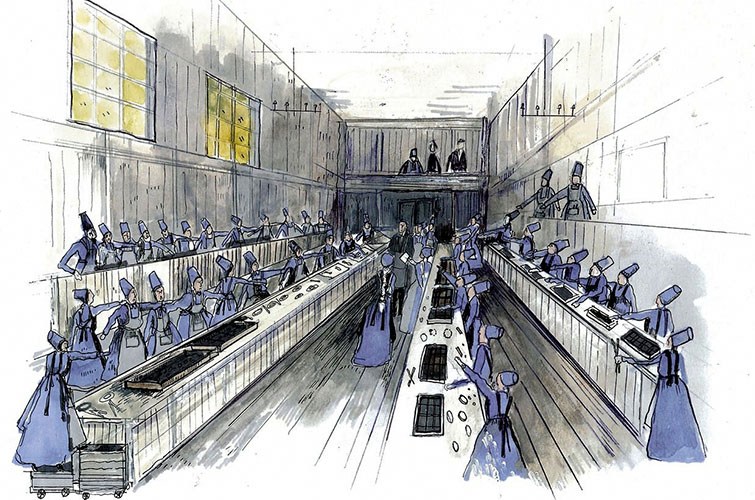
The work of a production designer is extremely important. Not only did they create the 'face' of the film, they also had to find the 'soul' of that 'face'. Creating a unique and transparent beauty for the film's image is one of the most important tasks of a production designer. For example, when Richard Sylbert worked with the director of the film The Graduate, he understood that the theme of the film was about the cramped life of young Benjamin Braddock (Dustin Hoffman), he created frames containing hidden information. That message: Ben is always in rectangular frames. In the opening scene of the film, Ben is leaning against the aquarium and looks like he is lying in the aquarium. The image of 'Ben fish in invisible lakes' can be seen throughout the film, even when near the end of the film, Ben escapes outside the 'aquarium' at his lover's wedding, only a few seconds later. There, he fell into another 'aquarium' - the bus that took them to find new happiness. Similarly, in The Mood for Love, the film tells the love story of strangers who accidentally bump into each other in awkward situations, not by accident but the corridors in the film are narrow. William Chang used the cramped spaces to create a feeling for viewers that the collision of characters in the film is inevitable. Not only that, the beauty of the woman with seductive curves hidden behind the cheongsam is strongly exalted by these narrow rectangular corridors.
Many indie films don't hire production designers due to budget constraints, and it shows limitations. You've probably seen countless productions choose to rent high-quality cameras like ALEXA instead of hiring the production team needed for their shots, and the film will suffer the most.
A great production designer can make your movie: look and feel like a million bucks, no matter what genre you're shooting (film or digital). By leveraging an understanding of color, place, and a myriad of other factors – they can increase production value tremendously without necessarily breaking your budget.
In the Fine Arts group, there are many patriarchs: the fine arts group (with the same name as the main group, which confuses many people), the design team, the props group, the costume team, and the construction team. With epic movies (such as The Lord of the Rings, when it had to produce more than 19,000 costumes, 45,000 weapons and props, and hundreds of thousands of objects to dress up), the Fine Arts team can have more than 300 people to get the job done!
Art Direction
Contrary to what many people think, the position of Art Director is the top, in fact the title of Production Designer is higher than the position of Art Director. The production designer is the one who has overall responsibility, while the art director is the one who reports back to the production designer on the work status and works directly with the artists and artists, such as the set designer (set designer), graphic designers (graphic artists) and painters, the creators directly. The art director also works directly with the construction team to oversee the aesthetic and material aspects of the setting. The assistant art directors will take on more 'hands-on' tasks – measuring the set, creating the graphics, gathering information for the production designer, and sketching the set. Sometimes, the set designer also takes on the job of assistant art director. The scene designer is usually an architect, in charge of designing the building structure or interior setting based on the ideas of the production designer. Meanwhile, the painter (Illustrator) is responsible for sketching the production designer's ideas into images.
Design team
The Set Decorator is in charge of the decoration of the film's setting, including the design of the interior and all the items seen on the film. Working directly with the production designer and art director, the role of the set decorator is also very important – that's why the American Academy of Art Directing recognizes the title of production designer and set decorator. Helping them is also the person in charge of buying and renting the background decorations and the set dresser.
Props team
The Props Master is in charge of finding and managing all the props that appear in the movie. Next to them are props builder (also known as propmaker, ie prop maker), in charge of making props in the movie. Usually, they are technical engineers who are proficient in construction, turning, electrical work, etc. In sci-fi movies, they play a very important role in creating unique props both physically and mentally. artistic design and application. The props team also has Armorer, ie weapons experts. They must have special training and qualifications to be able to take on this potentially dangerous job. (If you remember, Bruce Lee's son died from a fake gun that fired a live shot while filming The Crow, also partly due to the carelessness of the weapons officer.)
Construction team
The construction coordinator oversees the construction of the scene as well as ordering materials, scheduling work and advising carpenters, painters and builders.
Other groups
In addition, there are scene groups (in charge of drawing the sky, the background of the house, the surfaces of the material in the context by manual or printing methods), the tree nest (the the design and arrangement of trees in the context, decoration of gardens and gardens), hair and makeup, costumes (including costume designers, costume consultants, dress testers, tailors, etc.) ). All of them when starting their work must understand: what the film they are making is about, what its message is, and what they do must serve the purpose of expressing that message.
For the people who do hair, makeup and costumes, their work is directly related to the actor, which is directly related to the character of the movie. Therefore, equally important, they must read the script, understand the character's biography, each person's personality so that they can clearly show through the character's appearance.... With historical films, they also have to Research and refer to documents to know at that time, how people dressed, how to make up. With sci-fi films that require imagination, they also have to talk to the production designer as well as the director about the background of the designs.
EZ COMMUNICATIONS COMPANY LIMITED
Address: No. 31, D11 Street, Tay Thanh Ward, Tan Phu District, City. Ho Chi Minh City
Tax code: 0315570589
Phone: 0937695444 / 0907710660
Email: This email address is being protected from spambots. You need JavaScript enabled to view it.
Website: www.ezmedia.com.vn
If you need any information please fill out the information and send it to us...


